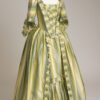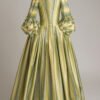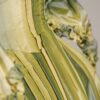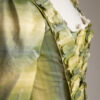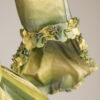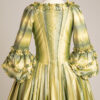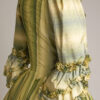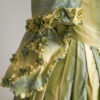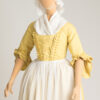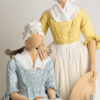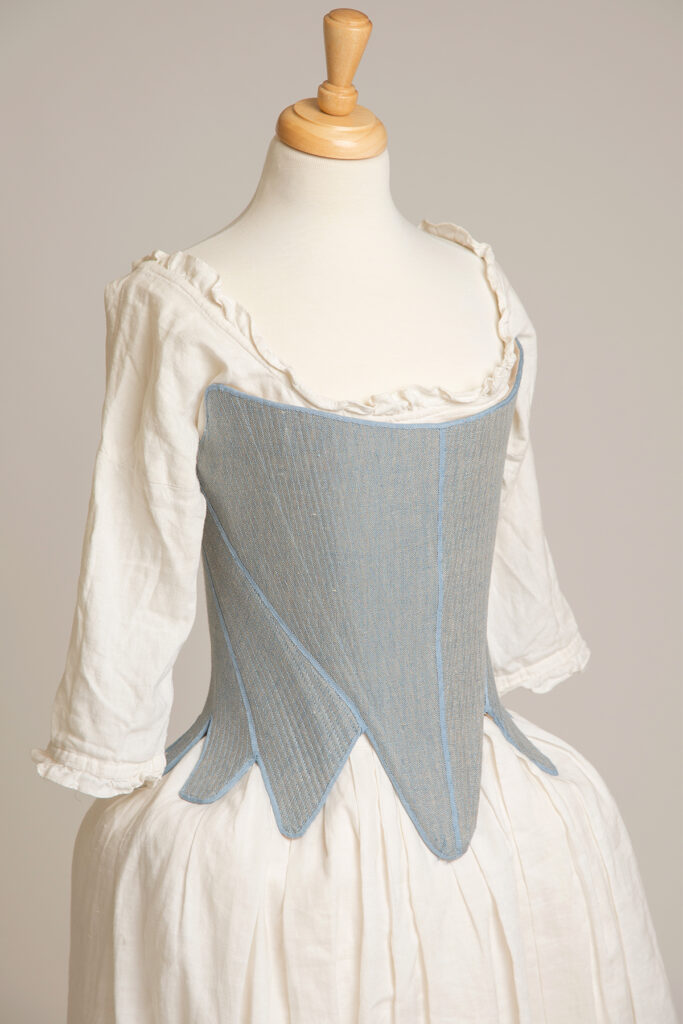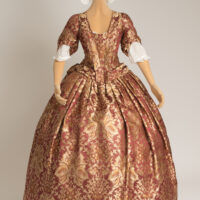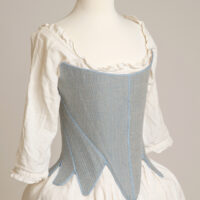Product Description
c.1760s Green Stripe Night-gown
These gowns flourish in the 1760s – especially, it seems, with this type of neat trim!
With the trimming now in pleated form, and arranged in a far more straight and angular layout, these simpler looking gowns become a firm favourite in the wardrobe of the UK ladies. This is probably the style of gown that the French fell in love with, around this same time!
This gown comes in 3 separate pieces – the main outer gown, the petticoat and the stomacher. It is all pinned together over the stays to create that smooth, taut look.
Some of it’s details are:
- The sewn down pleated back that flows into the main back skirt
- A furbelow decorated stomacher
- The robings too are decorated with the pleated furbelows
- Double ruffles at the sleeve edged with narrow furbelows
- Matching Petticoat with Furbelows and flounces
The last 2 photos are examples of how this same gown can look in other fabrics.
So, how does this work?
This gown picture here, has been made up as a sample for you to see the trimming styles, the ruffles and all its design features in 3D form. Everything down from the pleat arrangements, the robings etc has been based on originals and this gown confirms what you will be receiving in a visual manner – though obviously it will be made up in a different size.
If and when you order, there will then be a discussion about your undergarments and your measurements with these various areas explained. We will then discuss fabric – ideally a good silk is best as the better quality your silk is, the better those ruffles and trim will stay fray free! But all of this will be discussed at the early stages. Don’t worry – we like to make sure the whole process is crystal clear and easy for our clients.
(Please note the gown does not come with any undergarments provided)
Our Research
So as already mentioned in the many pages of this site, the gowns are completely constructed using original techniques. There have been many years of research and study sessions, that have been gone through to truly understand 18th century sewing, and if you order a garment from us, you will get all that knowledge and learning bundled up in your gown!
Each gown is handsewn – and not just handsewn for the sake of saying it – but handsewn because we are using the original construction methods research on the originals. We want your dress to feel real when you wear it and to look like an original gown from the museums!
The Materials:
So the main fabric of the gown is not included in the price – and is pretty much up to you as to colour, pattern and style. 🙂
From our side it is MUCH easier to sew natural fibres such as silks and linens – and you, as the customer will get a better looking garment in a better fabric – but it is truly up to you. We will discuss the amount of fabric you may need to purchase in the build up emails to having your gown as depending on size, height, trimming requirements – as this may vary.
We happily provide the linens for the lining and the rest of the haby used on the gown, including lead weights if you wanted to have that option. 🙂


